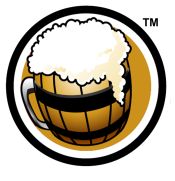Hops
|
Amount
|
Variety
|
Cost
|
Type
|
AA
|
Use
|
Time
|
IBU
|
Bill %
|
|
1 oz |
Bravo1 oz Bravo Hops |
|
Pellet |
13.3 |
Boil
|
75 min |
54.91 |
76.9% |
|
0.30 oz |
Cascade0.3 oz Cascade Hops |
|
Pellet |
7 |
Boil
|
75 min |
8.67 |
23.1% |
|
1.30 oz
/ $ 0.00
|
Hops Summary
|
Amount
|
Variety
|
Cost
|
IBU
|
Bill %
|
|
1 oz |
Bravo (Pellet) 0.99999999771257 oz Bravo (Pellet) Hops |
|
54.91 |
76.9% |
|
0.30 oz |
Cascade (Pellet) 0.29999999931377 oz Cascade (Pellet) Hops |
|
8.67 |
23.1% |
|
1.30 oz
/ $ 0.00
|
Mash Guidelines
|
Amount
|
Description
|
Type
|
Start Temp
|
Target Temp
|
Time
|
|
9.5 gal |
|
Infusion |
-- |
149 °F |
75 min |
Priming
|
Method: sucrose
Amount: 3 oz
Temp: 68 °F
CO2 Level: 2.1 Volumes |
Target Water Profile
Cville Tap
Notes
After a lot of research (and commercial barleywine tasting, of course) this was my first go at a big beer over 8%. And what better time then when we were all stuck at home during COVID! I wanted a beer I could age for many years.
My efficiency was pretty low (mid 50s vs my normal 70%), but I expected that and already planned to compensate with dark brown sugar to reach 12%.
Pitched 2L starter into 2 gallons at 65 degrees, then 24 hours later I dumped in the remaining 2.5 gallons. Aerated well after first pitch, then again after 12 hrs. Kept at 65 for 1 week, then raised to 70 for 1 week. Transferred to secondary at week 2, plan to keep here for 3-4 months before cold crashing and bottling with fresh yeast. According to my research, I'll try my first one around Christmas (7.5 months), but it might be 1-2 years before this beer really shines! Long secondary and lower bottle carbonation to avoid bottle bombs with the extended aging these bottles will experience. Also due to my plan to age, I wanted higher ABV and IBUs, and didn't bother with hopping for flavor/aroma.
I had almost a gallon of trub/yeast from primary! I dumped the entire post-boiled wort contents into the fermenter (more nutrients), and the yeast cake was thicker than I've ever had before. Impressive, but sad to realize I only had 3.5 gallons make it into secondary.
Update: Bottled after 3 months in secondary. Added priming sugar (targeting 2.2 CO2) and half a pack rehydrated S-04. Swirled bottles every few days for the first 10 days to help the yeast finish the carbonation before the 12% ABV cooked them! Initial taste during bottling gave me high hopes! The driving factor was still harsh alcohol (expected), but hiding behind that was a very sweet and enjoyable barleywine flavor. This will obviously benefit from aging. Very excited for this one, hopefully it'll be good for years to come! I plan to only drink 3-4 per year and space these out over a decade! Hopefully I have the patience.

Last Updated and Sharing

- Public: Yup, Shared
- Last Updated: 2020-09-08 18:56 UTC
For quick copying and pasting to a text based forum or email.
Click the Download as HTML file button below.
Recipe costs can be adjusted by changing the batch size. They won't be saved but will give you an idea of costs if your final yield was different.
|
Cost $ |
Cost % |
| Fermentables |
$ |
|
Steeping Grains
(Extract Only) |
$ |
|
| Hops |
$ |
|
| Yeast |
$ |
|
| Other |
$ |
|
| Cost Per Barrel |
$ 0.00 |
|
| Cost Per Pint |
$ 0.00 |
|
| Total Cost |
$ 0.00 |
|
Discussion about this recipe:
